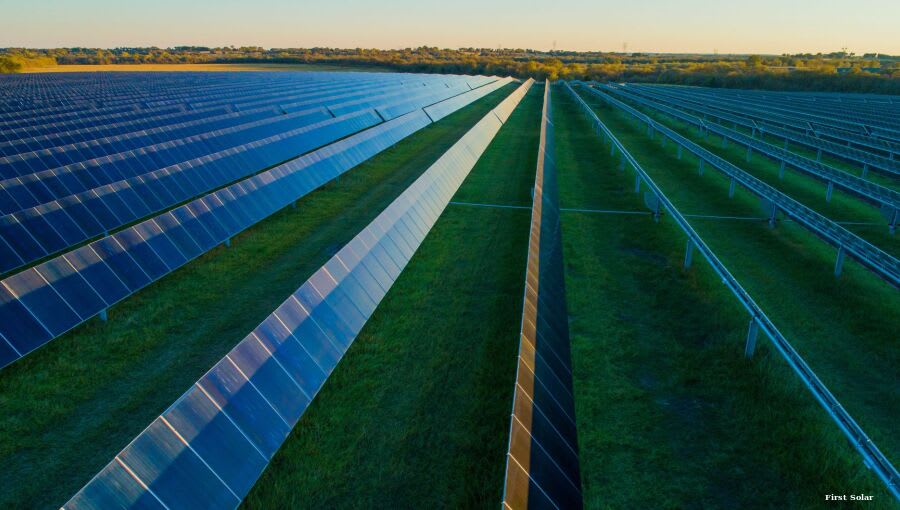Solar Power Boosts Global Clean Electricity to Record High

The share of electricity generated from low-carbon sources worldwide surpassed 40% for the first time, according to a new report released by Ember, the London-based independent energy think-tank. The report highlights a significant turning point in the global shift away from fossil fuels, driven primarily by record growth in solar and wind energy.
In 2024, clean sources – comprising renewables and nuclear – produced 40.9% of the world’s electricity, the highest level since records began in the mid-20th Century. This milestone was made possible by a surge in renewable output, with solar energy emerging as the primary engine of growth.
'Solar power has become the engine of the global energy transition,' said Phil MacDonald, managing director at Ember. 'Paired with battery storage, solar is set to be an unstoppable force. As the fastest-growing and largest source of new electricity, it is critical in meeting the world’s ever-increasing demand for electricity.'
In 2024, solar accounted for over half of the growth in renewable energy production, adding 474 TWh, as reported by Ember. Global Electricity Review 2024 . This marks a 29% rise compared with the previous year, continuing two decades of annual double-digit growth. Solar’s total output has now more than doubled in just three years, providing over 2,000 TWh last year, and now accounts for nearly 7% of the global electricity mix.
Wind also contributed significantly, making up 8.1% of global generation, while hydro-electricity maintained its position as the single largest renewable source at 14%. Together, renewables added a record-breaking 858 TWh in 2024, 49% more than the previous peak recorded in 2022.
Significant expansion, yet emissions continue to creep up
Even with the significant move toward greener energy sources, worldwide emissions related to electricity production still went up marginally, climbing by 1.6% to hit a record level. A contributing factor was a 1.4% boost in electricity generated from non-renewable resources like coal and gas, which can be attributed mainly to severe climatic conditions leading to greater demand for cooling systems across numerous areas.
The report credits approximately twenty percent of the yearly increase in demand to heatwaves, which have become more frequent due to the ongoing climate crisis. These weather-driven demands contributed an additional 0.7% to worldwide electricity usage, altering the short-term pattern.
'More extreme temperatures led to an uptick in fossil fuel usage in 2024; however, we probably won’t witness a comparable rise in 2025,' stated MacDonald. 'Despite all the distractions, it’s crucial to concentrate on what truly matters.'
The report indicates that without the additional stress caused by elevated temperatures, the production of fossil fuels would have increased by only 0.2%. Clean energy sources accounted for 96% of the fundamental rise in demand during this period.
The expansion of clean energy will surpass the pace of demand.
In the future, Ember anticipates that the expansion in clean power production will regularly exceed the rise in worldwide energy demands, leading to a continuous reduction in electricity generated from fossil fuels. According to present trends, renewable sources should meet the anticipated yearly increase in demand of 4.1% up till 2030.
The global community is closely observing how advancements such as artificial intelligence and electric vehicles will influence electricity consumption," stated MacDonald. "There is evident certainty that rapidly expanding solar and wind energy sources will meet these needs effectively, leaving those anticipating increased reliance on fossil fuels let down.
The growing electrification of industries like transportation and heating is transforming the energy sector. By 2024, the broader adoption of electric cars, heat pumps, AI technologies, and data centers contributed collectively around 0.7% of worldwide electricity consumption—marking an increase from half this share merely five years prior.
China and India are at the forefront of this transition.
Quick advancements in developing countries are speeding up this transformation as well. Specifically, China was responsible for over fifty percent of the world's increased production of solar power in 2024. Last year, clean energy sources satisfied eighty-one percent of the nation’s growing electricity needs, underscoring a significant pivot in its energy strategy.
India experienced a significant increase as well, with its solar capacity additions doubling compared to the previous year. Both nations have emerged as key players in international energy dynamics and are anticipated to be pivotal in driving down the use of fossil fuels over the long term.
MacDonald emphasized that "cleantech, rather than fossil fuels, is now fueling economic progress." He added, "Even with rapidly increasing demand globally, the age of fossil-fueled expansion is nearing its conclusion."
Ember’s sixth annual Global Electricity Review is based on country-level data from 88 countries, representing 93% of global electricity consumption. The organisation has also released an open dataset tracking electricity generation and trends across 215 countries and territories.
The report emphasizes that although fossil fuels continue to hold a significant portion of the energy market, their influence is diminishing. As solar and wind power are expected to fulfill future demands and grow even more, specialists predict that the worldwide electricity industry is transitioning into a new phase.

Posting Komentar untuk "Solar Power Boosts Global Clean Electricity to Record High"
Please Leave a wise comment, Thank you